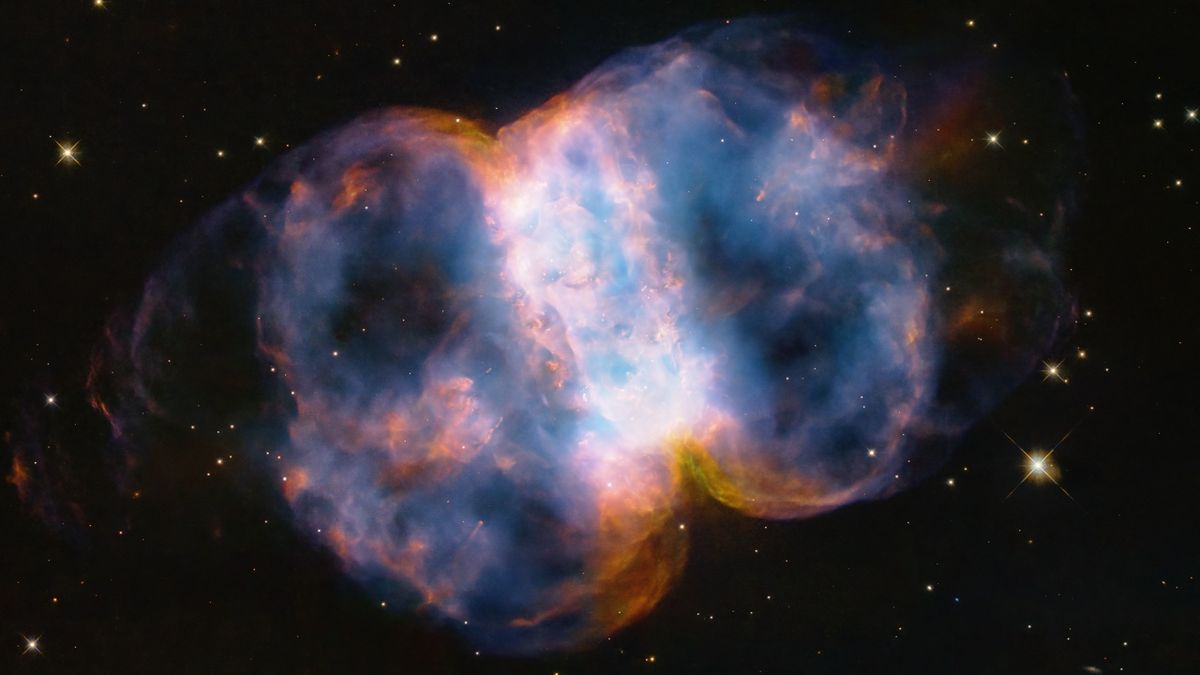To write that the Hubble Space Telescope is legendary would be an understatement.
In the 34 years this telescope has been in orbit, it has produced breathtaking images of the cosmos. One that sticks out, for instance, is the iconic Hubble Ultra-Deep Field, aka the deepest visible-light view of our universe ever created. Thanks to the Hubble telescope, astronomers know our universe is about 13.7 billion years old and that many galaxies host supermassive black holes at their centers. It’s because of this spaceborne eye on the cosmos that scientists were also able to map the mysterious substance dark matter in 3D.
Related: Citizen scientists spot more than 1,000 new asteroids in old Hubble Telescope photos
“Most of Hubble’s discoveries were not anticipated before launch,” NASA’s Hubble mission team said in a statement. “The space telescope is the most scientifically productive space astrophysics mission in NASA history. The demand for using Hubble is so high it is currently oversubscribed by a factor of six-to-one.”
So, to celebrate 34 years of Hubble, the astronomers unveiled a fresh image the telescope took of the Dumbbell Nebula, or M76, which is a two-lobed, expanding shell of gas shed by a dying star at the center.
Located 3,400 light-years from Earth in the constellation Perseus, M76 resembles “a balloon that’s been pinched around a middle waist,” bordered by a glowing ring of gas and dust ejected by the central star when it ran out of fuel. The star sizzles at temperatures exceeding 130,000 degrees Celsius (250,000 degrees Fahrenheit) — roughly 24 times the temperature of our sun’s surface, making it one of the hottest known stellar remnants.
As seen in the Hubble image, the star’s outer layers form a dumbbell-shaped ring around it, which hosts countless dense knots of gas and dust ranging from 17 billion kilometers to 56 billion kilometers (10.6 billion miles to 34.8 billion miles) and each encompassing as much mass as three whole Earths. It is possible that this ring was shaped by a binary star, although that companion star itself isn’t seen in any Hubble images. One theory is that the invisible star may have been shredded and consumed by the central star, according to NASA.
The material seen in the image is blasting out into space at a speedy two million miles per hour. “That’s fast enough to travel from Earth to the Moon in a little over seven minutes!” the Hubble team said in the statement.
Although M76 is classified as a “planetary nebula,” it is not associated with any known planets. The title is a misnomer that arose because astronomers using smaller telescopes in the 1700s misinterpreted such nebulas as planets. Looking at this image, it is hard to forget that the Hubble telescope is just above Earth’s atmosphere, orbiting our planet roughly 320 miles (515 km) above the surface. To keep the telescope from gradually being dragged into Earth’s atmosphere, it was boosted into slightly higher orbits multiple times over the years. The telescope “was designed to be serviced” and was revisited by astronauts as part of NASA’s space shuttle program. That maintenance capability was lost after the space shuttle was retired in 2011.
NASA estimates the telescope will operate until at least late 2020s. Sometime during the next decade, the agency plans to attach a propulsion module to the telescope to facilitate a controlled re-entry into the Pacific Ocean or to once again boost the telescope into a higher orbit to keep it aloft for longer.

Dr. Thomas Hughes is a UK-based scientist and science communicator who makes complex topics accessible to readers. His articles explore breakthroughs in various scientific disciplines, from space exploration to cutting-edge research.








